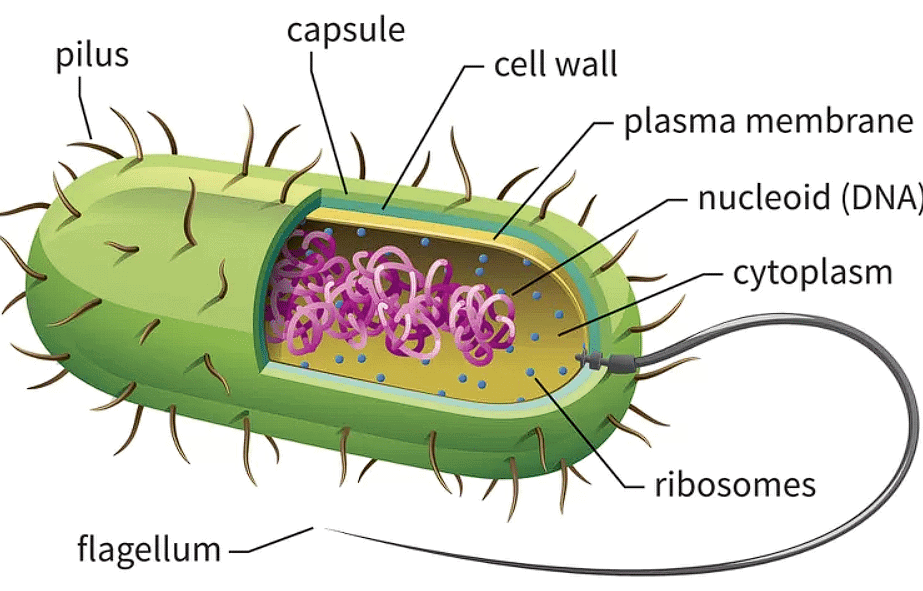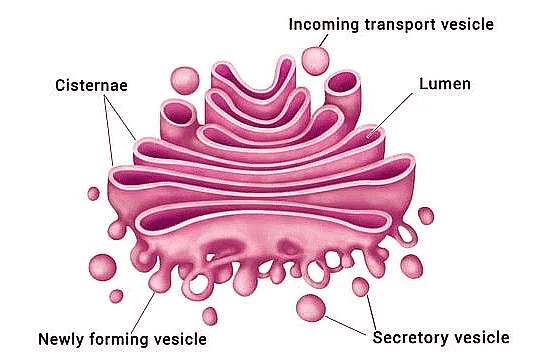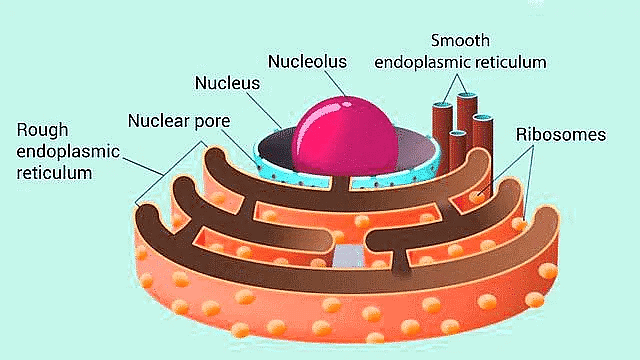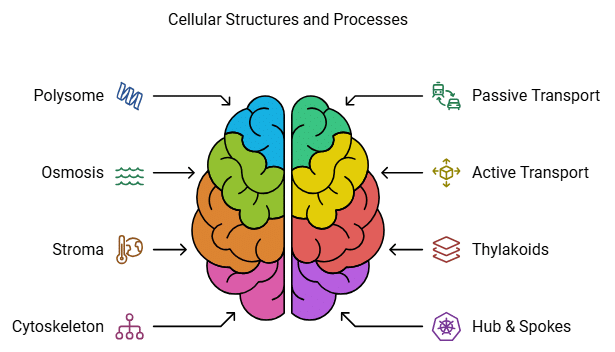Important Diagrams: Cell - The Unit of Life | Biology Class 11 - NEET PDF Download
Cell - The Unit of Life
 A cell is the basic structural and functional unit of life. It is the smallest unit of an organism that can carry out all the processes necessary for life. Cells are often called the "building blocks of life" because all living organisms, whether they are single-celled or multicellular, are composed of cells.
A cell is the basic structural and functional unit of life. It is the smallest unit of an organism that can carry out all the processes necessary for life. Cells are often called the "building blocks of life" because all living organisms, whether they are single-celled or multicellular, are composed of cells.Some of the different types of cells based on various criteria are given below that can you in your NEET exam.

1: Types of Cell
Cells can vary in size, shape, and function, but they all share certain fundamental characteristics.
(a) Eukaryotic Cell
Eukaryotic cells are complex cells with a true nucleus and membrane-bound organelles.
- They are the building blocks of multicellular organisms and are characterized by their organized internal structure, including the nucleus,endoplasmic reticulum, mitochondria, and other organelles.
- Eukaryotic cells are involved in various cellular processes and are found in plants, animals, fungi, and some single-celled organisms.
 Eukaryotic Cell
Eukaryotic Cell
(b) Prokaryotic Cell
Prokaryotic cells are simpler in structure compared to eukaryotic cells, and they lack a true nucleus and membrane-bound organelles.
- Prokaryotic cells are found in organisms such as bacteria and archaea.
- They are generally smaller and less complex than eukaryotic cells but are highly adaptable and have evolved to thrive in a wide range of environments
 Prokaryotic Cell
Prokaryotic Cell
(c) Plant Cell
Plant cells are fundamental to the structure and function of plants. They possess unique organelles like chloroplasts and a central vacuole that are not found in animal cells.
- These features enable them to perform photosynthesis, store water and nutrients, and provide structural support, all of which are essential for plant growth and survival.
 Plant Cell
Plant Cell
(d) Animal Cell
An animal cell is the fundamental structural and functional unit of animal organisms. It is a microscopic, membrane-bound structure that serves as the basic building block of animal tissues and organs.
- An animal cell is typically small and has a complex internal structure.
- It is surrounded by a semi-permeable cell membrane, also known as the plasma membrane, which encloses the cell's contents and separates it from the extracellular environment.
 Animal Cell
Animal Cell
2: Different Shapes of Cells
Cells can vary in shape and structure depending on their functions and the organisms they belong to. While the basic structural components of cells are similar, there can be variations.
- Spherical Cells: These cells have a round or spherical shape. Examples include many animal cells, such as blood cells (erythrocytes) and some bacterial cells.
- Cuboidal Cells: Cuboidal cells are cube-shaped, with all sides approximately equal in length. These cells are often found in epithelial tissues, such as those lining the kidney tubules.
- Columnar Cells: Columnar cells are elongated and have a tall, rectangular shape. They are commonly found in the lining of the intestines, where they aid in absorption.
- Squamous Cells: Squamous cells are flat and thin, resembling scales or fried eggs. They are found in tissues where a thin structure is needed, like the lining of blood vessels and the skin's outermost layer.
 Shapes of Cell
Shapes of Cell
3: Types of Chromosomes
Chromosomes are thread-like structures found in the nucleus of eukaryotic cells. They are composed of DNA and associated proteins, and they carry genetic information in the form of genes. In humans and many other organisms, there are several types of chromosomes.
Some of the key types of chromosomes:
- Metacentric Chromosomes: Metacentric chromosomes have a centrally located centromere, resulting in two equal arms of the chromosome.
- Submetacentric Chromosomes: Submetacentric chromosomes have a centromere that is slightly off-center, resulting in one longer arm (q-arm) and one shorter arm (p-arm).
- Acrocentric Chromosomes: Acrocentric chromosomes have a centromere that is located closer to one end of the chromosome. They have a very short p-arm and a long q-arm.
- Telocentric Chromosomes: Telocentric chromosomes have a centromere located at one end of the chromosome, resulting in a long single arm.
 Types of Chromosmes
Types of Chromosmes
4: Structure Cell Organelles
Cell organelles are specialized structures within a cell that perform specific functions, contributing to the cell's overall structure and function.
Some important cell organelles are given below
(a) Structure of Chloroplast
Chloroplasts play a crucial role in the process of photosynthesis, which is the conversion of light energy into chemical energy in the form of glucose.
- This process not only provides energy for the plant but also produces oxygen as a byproduct, which is essential for all aerobic organisms on Earth.
- Chloroplasts are surrounded by a double membrane system, similar to the structure of the cell's nucleus. The outer membrane is smooth, while the inner membrane is folded into numerous sacs called thylakoids.
- The stroma is the semi-fluid matrix within the chloroplast, surrounding the thylakoid membrane.
 Chloroplast
Chloroplast
(b) Structure of Mitochondria
Mitochondria play a central role in cellular respiration, a process that generates ATP, the cell's primary source of energy.
- Mitochondria are present in various eukaryotic cells, not only in animals but also in plants and fungi, and they are essential for the survival and functioning of these organisms.
- This initial step of glucose metabolism takes place in the cytoplasm, outside the mitochondria, and produces a small amount of ATP.
- Mitochondria are enclosed by a double membrane system.
 Mitochondria
Mitochondria
(c) Structure of Nucleus
The nucleus contains the genetic material (DNA) that governs the cell's activities and carries the genetic information passed from one generation to the next.

- The nucleus is surrounded by a double-membrane structure known as the nuclear envelope.
- Scattered across the nuclear envelope are nuclear pores, which are protein-lined channels that allow for the controlled exchange of molecules (such as mRNA and proteins) between the nucleus and the cytoplasm.
- Beneath the inner membrane of the nuclear envelope, there is a network of filaments called the nuclear lamina.
- The nucleolus is a distinct, often spherical structure found within the nucleus.
(d) Golgi Apparatus
Golgi Apparatus, also known as the Golgi complex or Golgi body. The Golgi apparatus is an essential organelle involved in the modification, processing, sorting, and packaging of proteins and lipids for transport within or outside the cell.
- The Golgi apparatus consists of a series of flattened, membranous sacs or cisternae that are often stacked on top of each other.
- Vesicles are small membrane-bound sacs that transport materials to and from the Golgi apparatus.
 Golgi Apparatus
Golgi Apparatus
(e) Endoplasmic Reticulum
The Endoplasmic Reticulum (ER), an important organelle within eukaryotic cells. The ER is involved in the synthesis, processing, and transport of proteins and lipids.
The Endoplasmic Reticulum has a complex structure and is divided into two main types:
- Rough Endoplasmic Reticulum (RER)
(i) The Rough ER is studded with ribosomes on its cytoplasmic surface, giving it a "rough" appearance under a microscope.
(ii) Function: The primary function of the Rough ER is protein synthesis and processing. Ribosomes on its surface synthesize proteins that are either secreted from the cell or integrated into cell membranes. - Smooth Endoplasmic Reticulum (SER)
(i) The Smooth ER lacks ribosomes on its cytoplasmic surface, giving it a "smooth" appearance.
(ii) Function: The Smooth ER is involved in lipid metabolism, including the synthesis of lipids (such as phospholipids and steroids), detoxification of drugs and poisons, and the regulation of calcium ion levels in muscle cells.
 Endoplasmic Reticulum
Endoplasmic Reticulum
5: Fluid-mosaic Model of Plasma Membrane
The Fluid-Mosaic Model of the Plasma Membrane is a conceptual framework used to describe the structure and functions of the cell membrane:
- Fluid Nature: The cell membrane is flexible and its components can move within the lipid bilayer.
- Phospholipid Bilayer: The core of the membrane consists of a double layer of phospholipid molecules.
- Proteins: Various proteins are embedded in or attached to the membrane, serving functions such as transport, signaling, and structural support.
- Carbohydrate Chains: Carbohydrate chains are often attached to proteins or lipids on the extracellular surface, playing roles in recognition and adhesion.
Functions: The membrane controls selective permeability, acts as a receptor, facilitates transport, aids in cell adhesion and recognition, and provides structural support.
 Fluid Mosaic Model
Fluid Mosaic Model
Diagram Based Previous Questions- NEET
Q1: Which is the important site of formation of glycoproteins and glycolipids in eukaryotic cells?
(a) Golgi bodies
(b) Polysomes
(c) Endoplasmic reticulum
(d) Peroxisomes
Ans. (a)
Solution.
Proteins and lipids are formed in the endoplasmic reticulum and some of them are modified to form glycoproteins and glycolipids in the Golgi apparatus.

Q2: The Golgi complex participates in
(a) Fatty acid breakdown
(b) Formation of secretory vesicles
(c) Respiration in bacteria
(d) Activation of amino acid.
Ans. (b)
Solution.
 Golgi Apparatus
Golgi Apparatus
Golgi complex is a complex cytoplasmic structure made up of smooth membrane saccules or cisternae, a network of tubules with vesicles and vacuoles, which takes part in membrane transformation, secretion and production of complex biochemicals. One face of Golgi apparatus in convex (forming, c is) face while the other is concave (maturing, trans) face. C is face receives contents from endoplasmic reticulum which then reaches trans face and bud off as secretory vesicles.
Q3: Match List -I with list -II. (2022) Choose the correct answer from the options given below:
Choose the correct answer from the options given below:
(A) (a)-(i), (b)-(iii), (c)-(ii), (d)-(iv)
B) (a)-(ii), (b)-(iii), (c)-(iv), (d)-(i)
C) (a)-(i), (b)-(ii), (c)-(iii), (d)-(iv)
(D) (a)-(iii), (b)-(i), (c)-(iv), (d)-(ii)
Ans. (d)
Solution. 
Q4: Select the wrong statement.
(a) Bacterial cell wall is made up of peptidoglycan.
(b) Pili and fimbriae are mainly involved in motility of bacterial cells.
(c) Cyanobacteria lack flagellated cells.
(d) Mycoplasma is a wall-less microorganism.
Ans. (b)
Solution.
 Prokaryotic Cell
Prokaryotic Cell
Pili and fimbriae are bacterial appendages which arc not involved in locomotion. Actually, pili are long, fewer and thick tubular outgrowths which develop in response to F+ or fertility factor in Gram negative bacteria.
- Being long they are helpful in attaching to recipient cell and forming conjugation tube. Fimbriae are small bristle-like fibres sprouting from cell surface in large number.
- There are 300-400 of them per cell. They are involved in attaching bacteria to solid surfaces.

Some Important Terms
- Polysome: Ribosomes are the site of protein synthesis. Several ribosomes may attach to a single mRNA and form a chain called polyribosomes or polysome.
- Passive transport: The membrane is selectively permeable to some molecules present on either side of it. Many molecules can move briefly across the membrane without any requirement of energy and this is called the passive transport.
- Osmosis: Water may also move across this membrane from higher to lower concentration. Movement of water by diffusion is called osmosis.
- Active transport: A few ions or molecules are transported across the membrane against their concentration gradient, i.e., from lower to the higher concentration. Such a transport is an energy dependent process, in which ATP is utilised and is called active transport, e.g., Na+/K+ Pump.
- Stroma: The inner chloroplast membrane is relatively less permeable. The space limited by the inner membrane of the chloroplast is called the stroma.
- Thylakoids: A number of organised flattened membranous sacs called the thylakoids, are present in the stroma
- Cytoskeleton: An elaborate network of filamentous proteinaceous structures consisting of microtubules, microfilaments and intermediate filaments present in the cytoplasm is collectively referred to as the cytoskeleton.
- Hub & Spokes: The central part of the proximal region of the centriole is also proteinaceous and called the hub, which is connected with tubules of the peripheral triplets by radial spokes made of protein.
- Perinuclear Space: A nuclear envelope, which consists of two parallel membranes with a space between (10 to 50 nm) called the perinuclear space, forms a barrier between the materials present inside the nucleus and that of the cytoplasm.
|
150 videos|401 docs|136 tests
|
FAQs on Important Diagrams: Cell - The Unit of Life - Biology Class 11 - NEET
| 1. What are the main differences between eukaryotic and prokaryotic cells? |  |
| 2. How do plant cells differ from animal cells? |  |
| 3. What are the different shapes of cells and their significance? |  |
| 4. What are the main types of chromosomes? |  |
| 5. What is the fluid-mosaic model of the plasma membrane? |  |






















